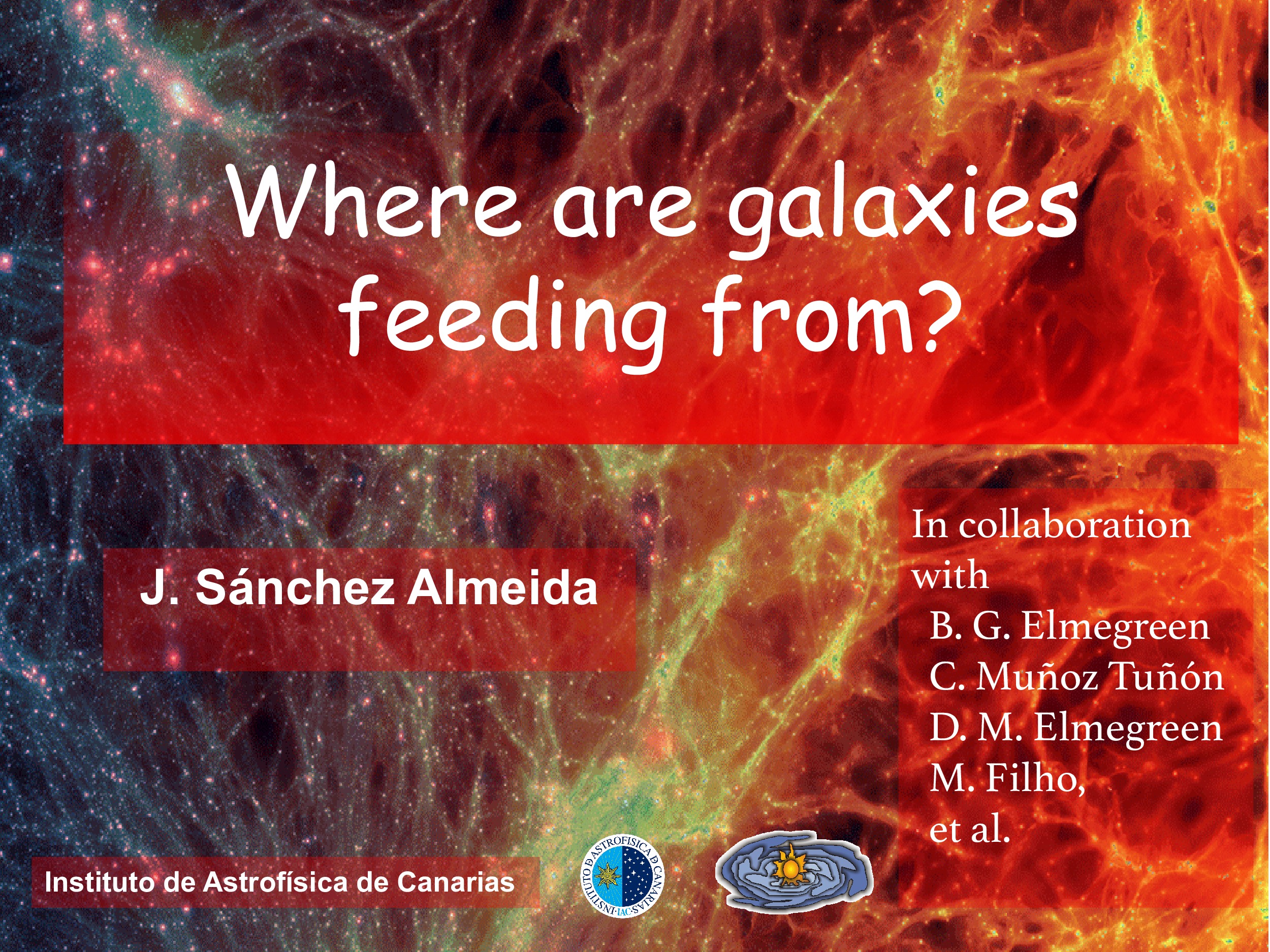Main category
Natural Sciences (Astrophysics and Astrononmy)
Abstract
Galaxies are born in the very early Universe. Depending on their properties (mainly on their mass
and environment), most of them are still forming today. Galaxies are systems that transform gas into
stars, and they are still doing so despite the fact that the galaxies exhaust their gas reservoir in a very
short time-scale. The question arises as to where the gas that keep them alive comes from. The answer is
clear from the point of view of the numerical simulations of galaxy formation: metal-poor gas is continuously
accreted from the cosmic web filaments (e.g., Dekel+09). However, the hypothetical cosmological gas inflow
has been extremely difficult to detect observationally (e.g., SA+14). The talk will describe the theoretical
framework that explains the formation of galaxies in a cosmological context, the key role played by
the accretion of cosmic web gas, and the evidence that we have of the process at work. (Some of this
evidence has been gathered by our group; e.g., SA+15.) In a sense, the situation is similar the
'quiet revolution' that happened in Solar Physics around the year 2000, when the quiet sun magnetic
fields were theoretically predicted (Cattaneo 99) but when observations only hinted at their existence
(e.g., SA+ 11).
Further reading
References:
Cattaneo 99, ApJL, 515, 39
Ceverino+16, MNRAS, 457, 2605
Dekel+09, Nat, 457, 451
SA+14, A&ARv, 22, 71
SA+15, ApJL, 810, 15
SA & Martinez Gonzalez, 11, ASPC, 437, 451
Do you have problems viewing the pdf-file? Download presentation
here
If the presentation contains inappropriate content, please
report the presentation. You will be redirected to the landing page.
